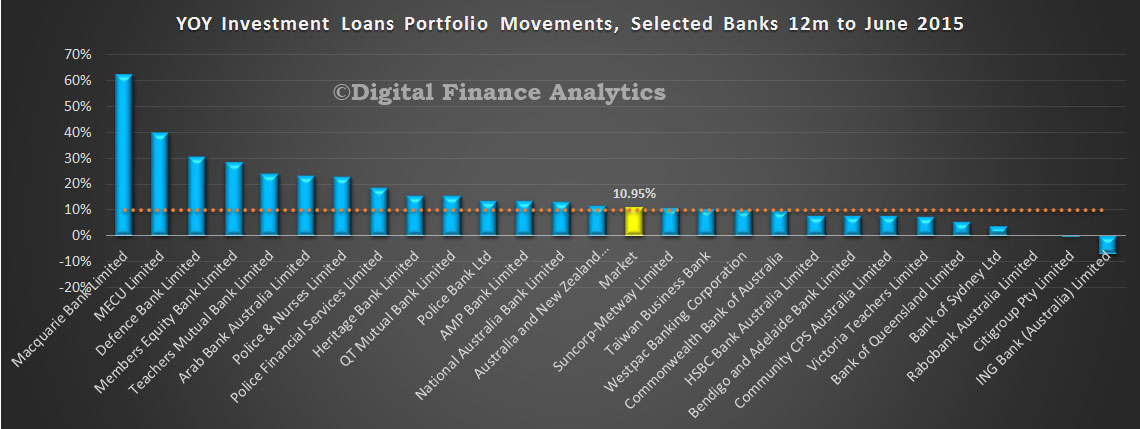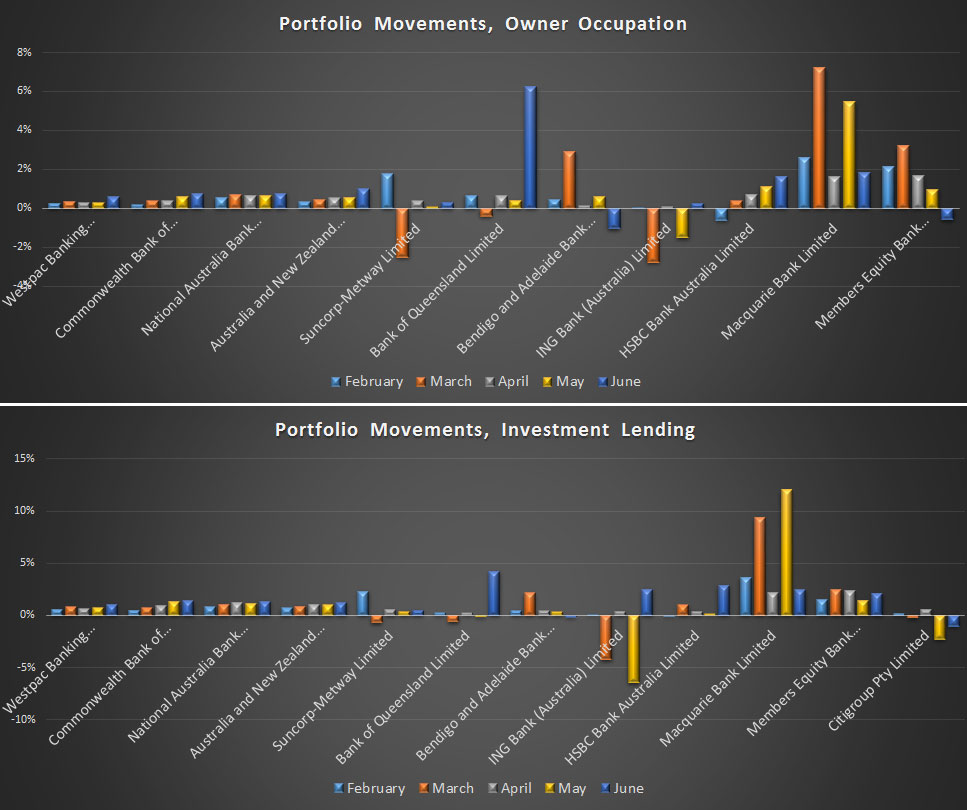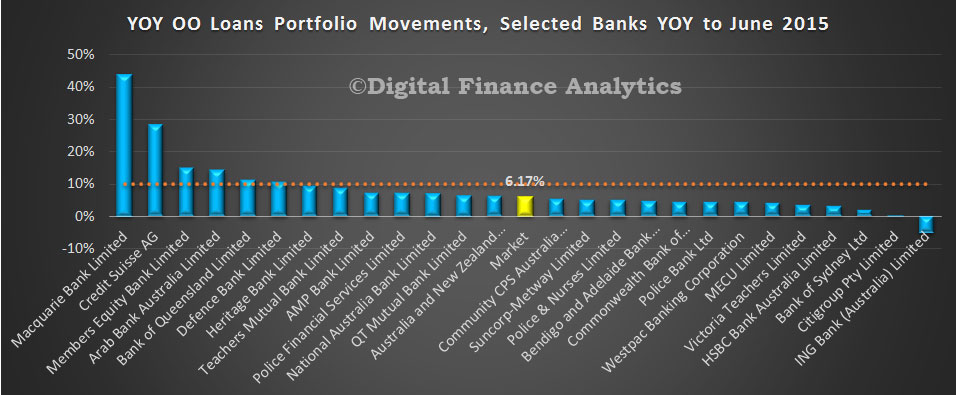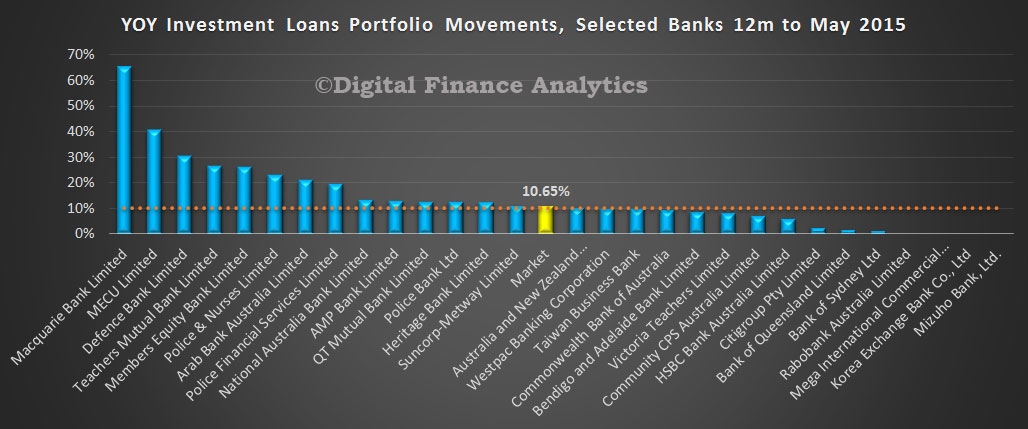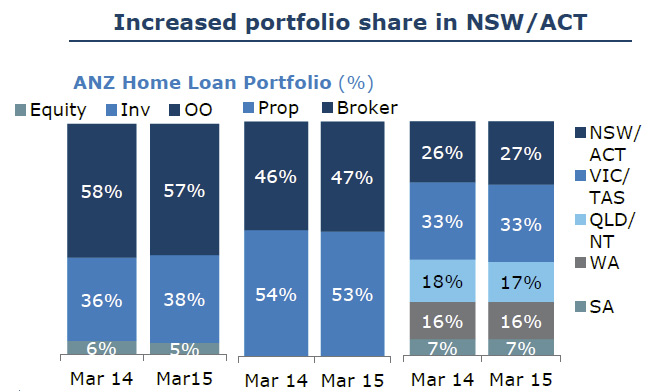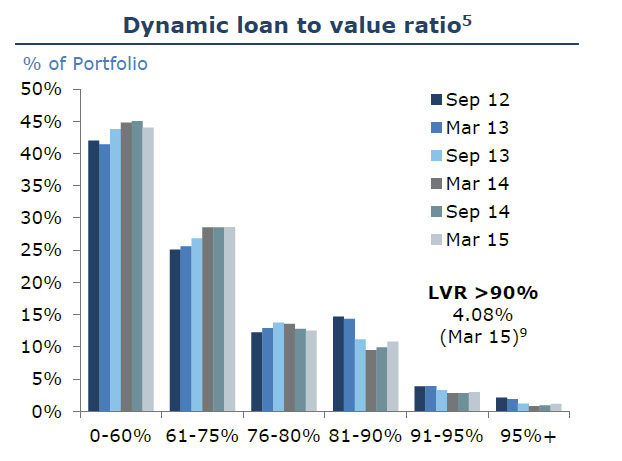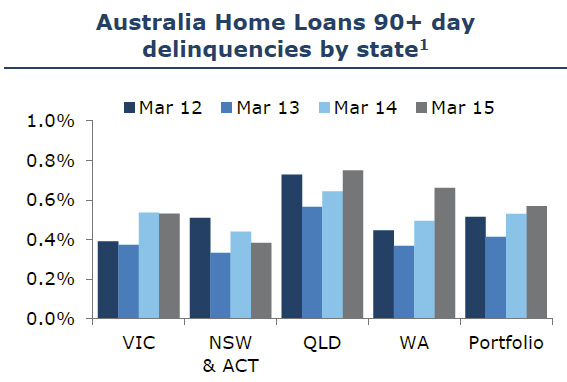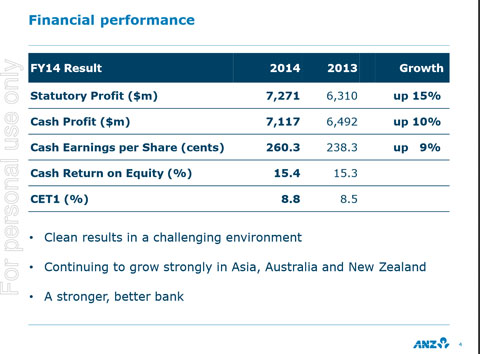ANZ’s unaudited cash profit for the 9 months to 30 June 2015 was $5.4 billion up 4% and unaudited statutory net profit was $5.58 billion up 11%. Profit before Provisions over the same period grew 5.1% (+3.4% on a constant Foreign Exchange (FX adjusted) basis).
Revenue expense jaws were tracking broadly neutral on a constant FX basis. Revenue and expense growth trends compared to PCP were broadly similar to the first half 2015 experience, though revenue growth was a little stronger and expense trends improved slightly.
Customer deposits grew 9.5% (+5% FX adjusted) with net loans and advances up 7.7% (+5.4% FX adjusted).
The Group Net Interest Margin at the end of the third quarter was broadly stable on the end of the first half assisted somewhat by slower growth in lower margin liquid asset holdings and positive trends in funding costs which offset asset price competition.
Gross Impaired Assets have decreased 3% over the nine months to 30 June 2015. The total provision charge of $877 million or 21 bps increased 13%. While loss rates are expected to remain well under the long term average, ANZ estimates that the total impairment charge for FY15 will be ~$1.2bn, or 21 bps compared to 19 bps in FY14.
The Individual Provision Charge declined 12.5% to $750m and while the Collective Provision Charge increased it remained at a relatively low level in absolute terms at $127m. The Financial Year to date has seen a normalisation of the risk profile component of the Collective Provision Charge with a moderate number of credit downgrades being recorded whereas the prior corresponding period in 2014 saw a higher level of upgrades.
The movement in the risk profile component of the Collective Provision Charge in 2015 reflects ongoing macro-economic stress including in the resources and agriculture sectors. The contribution to the collective provision from portfolio growth was broadly steady period on period.
At 30 June 2015 ANZ’s reported APRA Common Equity Tier-1 (CET1) ratio was 8.6%. Following the completion of the $2.5bn Institutional placement, the June 2015 pro-forma APRA CET 1 ratio was 9.2%.
On the basis that $500 million is raised under the Share Purchase Plan, on the same pro-forma basis this would add a further 13 bps increasing the CET1 Ratio to 9.3%. ANZ has no plans to underwrite the FY15 Dividend Re-investment Plan.
ANZ has one tranche of ~$400m of ANZ Wealth Australia Limited debt remaining which matures in March 2016. This tranche will not be refinanced. The 10 bps impact is expected to be offset through capital management efficiencies.
The recent capital raising has allowed ANZ to deal with the known regulatory changes and position ANZ’s capital position within the top quartile of international peers. ANZ is liaising with APRA in regards to detailing its internationally comparable capital position, on the basis of current information, we expect our internationally comparable CET1 ratio to be around 13%. ANZ’s Liquidity Coverage Ratio improved from 119% to 121% during the third quarter ending 30 June 2015.
Looking at the segmentals:
The Australia Division’s strong performance from the first half has continued with ongoing momentum in lending and deposit flows, margins well managed and customer numbers increasing by circa 5% in both the Retail and Commercial businesses. The Retail business has delivered strong growth in both home lending and credit cards and the Commercial business is also seeing good lending growth, especially in Small Business Banking, with improved trends in the Corporate and Business Banking segments.
The New Zealand Division is delivering strong balance sheet growth with above market performance in Mortgages, Business Lending and Deposits. Revenue growth was underpinned by continued high levels of customer acquisition and brand consideration and an improved digital offering.
Positive underlying performance continued across the key businesses in the Global Wealth Division with strong in-force premiums growth, stable claims and lapse experience plus growth in Funds Under Management. Global Wealth innovations – in physical, digital and personal – continue to deliver simple accessible wealth solutions improving how customers think about their financial wellbeing.
International and Institutional Banking continues to perform well in difficult operating conditions arising from macro-economic factors such as the ongoing global liquidity surplus and weak commodity prices. Income in the Global Markets Business was up 6% to $1.8 billion. Customer sales grew 9% led by strong results in Asia and customer facing revenue remains at over 75% of the total Global Markets income. The Trade and Supply Chain business margin stabilised in the third quarter having been impacted by falling commodity prices. Cash Management

